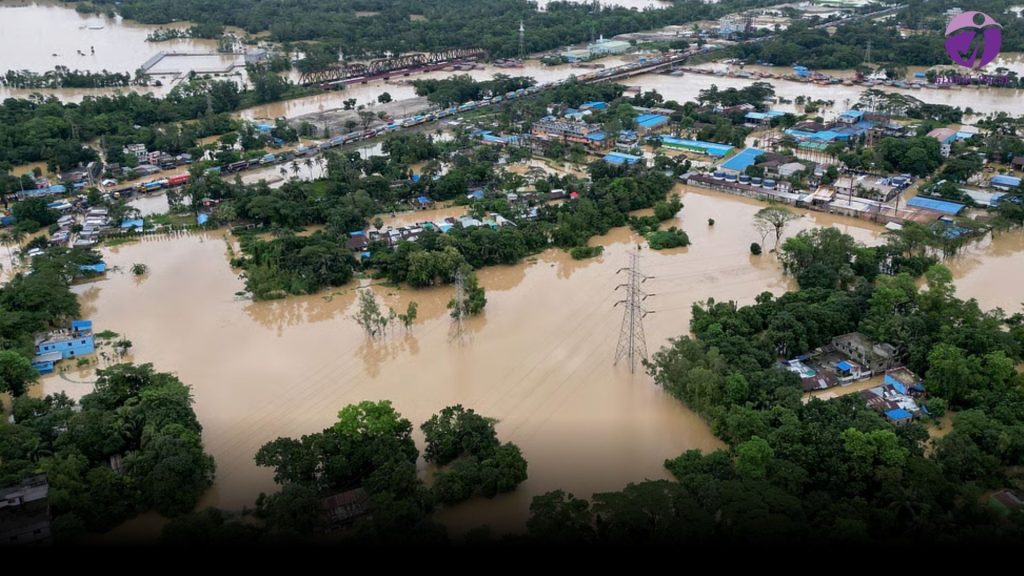In Feni, floodwaters are starting to recede following a period of continuous rainfall and hilly run-off that began on June 8. This weather event led to the collapse of embankments at 12 locations along the Muhuri, Kahua, and Silonia rivers, resulting in significant inundation across large areas of Parshuram, Phulgazi, and Feni Sadar upazila.
Today marks the beginning of residents returning to their homes from shelters, yet the extent of damage to agriculture, fisheries, livestock, and infrastructure in the affected areas remains significant.
District officials report that the flood impacted a total of six upazilas, with Parshuram, Phulgazi, and Feni Sadar identified as some of the areas most severely affected.
Additional Deputy Commissioner (ADC) Md Ismail Hossai reported that as of July 8, approximately 110 villages across the Parshuram, Phulgazi, Chhagalnaiya, Feni Sadar, and Daganbhuiyan upazilas, which are adjacent to the Indian state of Tripura, have experienced flooding.
“He noted that although the overall flood situation has seen significant improvement, certain areas continue to experience waterlogging.”
According to Md Atik Ullah, the district agriculture officer, crops spanning 2,371 hectares have suffered destruction. The reported losses encompass 934 hectares of Aman seedbeds, 7 hectares of ginger, 855 hectares of Aus paddy, 557 hectares of summer vegetables, 14 hectares of chilli, 3.5 hectares of turmeric, and a staggering 3,670 sacks of sack-cultivated ginger.
According to District Fisheries Officer Aminul Islam, fish from 2,300 ponds have been washed away, leading to an estimated loss of Tk 10 crore.
He noted that numerous ponds and fish farms remain underwater.
Md Mahmud Al Faruque, the executive engineer of the Local Government Engineering Department (LGED) in Feni, reported that a total of 125 kilometres of roads have sustained damage. This includes 100 km in the Fulgazi upazila and 20 km in the Parshuram upazila.
According to reports, around 20–25 percent of these roads remain submerged, and officials warn that the damage could escalate further.
Mozammel Haque, the livestock officer for Feni district, has confirmed the death of 2 to 4 livestock animals, alongside additional losses estimated between Tk 20 to 30 lakh, which also includes damages to poultry farms.
Last year’s flood left me unable to cultivate any crops. This year, I experienced the loss of 10 kg of Aman seedbeds, which were submerged and ultimately destroyed. “I won’t be able to cultivate Aman rice this year,” stated Akkas Uddin, a farmer hailing from Paschim Alka village in Parshuram upazila.
Farmers Shah Jahan, Abul Kashem, and Ali Akbar from Chitholia expressed shared concerns, reporting that their Aman seedbeds had been destroyed, rendering cultivation impossible for the current season.
Mamun Hossain, a driver of a CNG-run auto-rickshaw residing in ward No. 2 of Parshuram Municipality, reported that he sought refuge with his family amid the flooding crisis.
“Upon my return, I discovered that all of our bedding and furniture had been destroyed.” “We lack the funds necessary to repair our home and are currently enduring miserable living conditions,” he stated.













